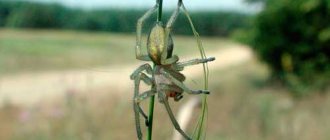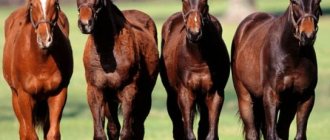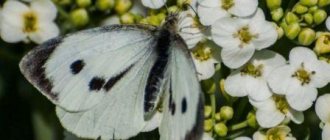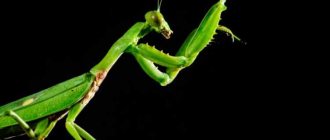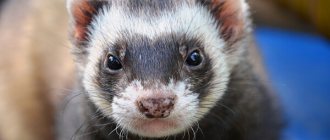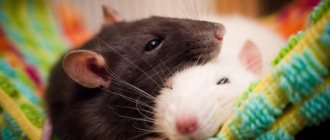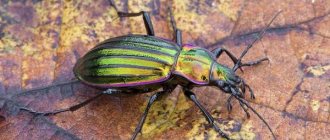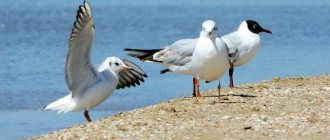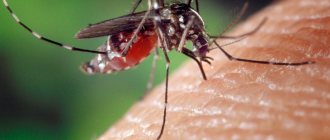Herbivores or herbivores are animals that eat plant-based foods, including grass, fruits, leaves, roots, bulbs, vegetables, etc. The teeth of herbivores are adapted for grinding plant tissue. Although there are a few herbivores that occasionally eat meat, many do not have the ability to chew or digest animal products. Some herbivores prefer fruits and leaves in their diet, so they are often called frugivores and folivores, respectively.
The diets of herbivores vary depending on climate, geographic location, and time of year. In the animal world, herbivory has some advantages. Unlike carnivores, herbivores do not have to hunt for their food in order to consume it. However, some plants protect themselves from animals with thorns or poison.
What are the most common traits of herbivores?
Most herbivores live in groups or herds, meaning they are social. Such animals act as primary consumers in the food chain, which means that they are prey to carnivores. This is why their eyes are usually located on the sides of their heads. This allows you to see a potential threat approaching without turning your head. They also have a common tendency to get very scared and run fast.
Although there are many herbivores in the world, it may surprise you to know that some of them are huge, have a bad reputation and look like carnivores. In this article we will look at some examples of herbivores, mainly mammals, and their diet.
What types of animals are there?
Nature is designed in such a way that living organisms want mainly three things: to live, to eat, and to reproduce.
As for nutrition, the diet of animals can be very different. But traditionally, based on the type of food they eat, animals are classified into three groups:
- carnivores;
- omnivores;
- herbivores.
When dividing into groups, the basis of the diet is taken into account. Occasional and infrequent plant snacks do not make carnivores omnivores. Even obligate carnivores (like cats) can sometimes eat plant foods.
This also applies to herbivores. Cute horses and deer are quite capable of eating a small animal or bird. And female placental mammals eat the placenta after giving birth.
Beaver
Beavers are large semi-aquatic rodents from the genus Castor that are primarily nocturnal. They are distributed throughout Eurasia and North America. Beavers are one of the largest rodents in the world; occupy second place after the capybara. They are famous for the construction of large dams. They are herbivores that primarily consume twigs, foliage and bark from birch, maple, alder, cherry, willow, aspen and coniferous trees.
General characteristics of mouse representatives
The large family of mice is not fully understood. On the territory of Russia there are 13 species of animals from the order of rodents, representing 5 genera. They all have a similar appearance, structure and lead almost the same lifestyle. Possessing a unique ability to adapt to any living conditions, mice thrive in all natural areas. The exceptions are the Far North and Antarctica. The widespread distribution of various species of rodents suggests the numerical dominance of their representatives among other mammals.
Interesting!
The familiar word “mouse” translated from the Indo-European language means “thief”, which is fully justified by the habits of the nimble animal.
Appearance:
- The mammal has a small elongated body. Its dimensions, depending on the species of the individual, range from 5 to 20 cm. This parameter is doubled due to the tail.
- The body of the mouse is covered with short hair, the color palette of which is gray, brown, red or brown. In nature, there are striped and variegated individuals, as well as snow-white albino rodents.
- The average weight of a mouse is 20-50 grams.
- Animals have a short neck.
- On the pointed, triangular-shaped muzzle, there are small black beady eyes and semicircular ears, providing good sound perception.
- Due to the sensitive thin whiskers - vibrissae - growing around the mouse's nose, it is able to perfectly navigate its surroundings.
- The short legs are equipped with 5 tenacious fingers, allowing them to overcome significant obstacles and dig holes.
To get acquainted with representatives of the rodent order, it is advisable to carefully study the photos of mice posted on the site.
Appearance of the mouse The animals, like other representatives of this family, have two pairs of large incisors located on the upper and lower jaws. They are very sharp and constantly grow - up to 1 mm per day, so they must be ground down. Failure to perform this procedure can lead to the death of the mouse if the length of the organs reaches 2 cm.
Rodents are highly fertile. At the age of 3 months, the female is capable of conception and childbearing. A wild mouse living in natural conditions breeds in the warm season, while animals living in heated rooms breed all year round. Pregnancy lasts approximately 20-24 days and, after this time, from 3 to 12 cubs are born.
Mice are born absolutely helpless - blind, toothless, naked. The mouse feeds it with milk for about a month. By the 10th day, the offspring are completely covered with hair, and after 3 weeks they become independent and disperse. Under favorable conditions, the population grows rapidly. The average lifespan of mice is 1-1.5 years. Genetically, they are capable of existing for 5 years, but how long the animal will live depends on specific circumstances.
On a note!
Bats do not belong to the mouse family. They are representatives of the order Chiroptera, which ranks second in size after rodents.
Capybara
The capybara (Hydrochoerus hydrochaeris) is the world's largest rodent. It is a member of the genus Hydrochoerus, like the capybara. The guinea pig is closely related to the capybara, and its distant relatives include chinchillas, nutrias and agoutis. The capybara is a social species that lives in groups of 10 or 20 individuals around dense forests and savannas. They are native to South America and primarily feed on grass, fruits, aquatic plants and tree bark.
Herbivorous birds
According to the method of feeding, all birds are divided into several groups:
- herbivores;
- insectivores;
- predatory;
- aquatic (feeds on fish).
Representatives of the herbivorous fauna are numerous.
The diet includes:
- flower petals and their juice;
- tree sap;
- kidneys;
- stems and shoots of grass;
- young green branches;
- grain sprouts;
- leaves;
- seeds;
- fruit.
Herbivorous birds play a significant role in the ecology of the natural world. They eat harmful insects and spread tree seeds by eating their fruits. Characterized by mobility. They have a wide habitat. They live on continents and inhabit oceanic islands.
The greatest diversity of birds inhabits tropical forests: 85% of living birds. Only 15% live at other latitudes. The structure of the beak and tongue is designed in such a way that it is possible to feed optimally: pecking, drinking juice, picking leaves and grass.
In our latitudes there are sparrows, titmice, nightingales, woodpeckers, pigeons, crows, magpies, cranes, starlings, orioles, and bullfinches.
The importance of herbivores in the fauna world is enormous. They participate in the natural biocenosis. Birds carry seeds of trees, herbs and flowers. This increases the area of vegetation distribution.
In steppe areas, herbivores contribute to the accelerated regrowth of grasses. Excrement replenishes the supply of beneficial bacteria in the soil, enriches its composition with microelements, and stimulates the growth of vegetation.
https://youtube.com/watch?v=yKsobkYAqx8
Camel
Members of the genus Camelus, camels are four-legged, artiodactyl mammals bearing distinctive fatty deposits on their backs known as humps. These animals are found in Asia and Africa. Camels were domesticated by humans because they are adapted to live in waterless and hot places, with significant differences in ambient temperature between day and night. Camels are herbivores; their main diet consists of saltwort, wormwood, camel thorn and saxaul.
Literature
- Shilov I. A. Ecology: A textbook for biologists. and honey specialist. universities / Shilov I. A. - M.: Higher School, 1998. - 512 p.
- Biological encyclopedic dictionary / chapter. ed. M. S. Gilyarov. - M.: Soviet Encyclopedia, 1986. - P. 674.
This is one of the largest and most dangerous bird species in the world. Their usual habitat is the tropical forests of New Guinea and Australia. To communicate with other birds of its species, the cassowary uses a crest on its head, with the help of which it receives very low frequencies, thanks to which communication between birds can be maintained over a long distance. They are quite dangerous herbivores and attack not only horses, cows and dogs, but also people. The most dangerous are the males who protect the chicks.
There are 5 species of rhinoceroses in the world, living in Asia and Africa. These animals are very hot-tempered, which makes them dangerous. The main and dangerous weapon of a rhinoceros is its horns, which are made of protein, and not, as many mistakenly believe, made of bone tissue. The largest known horn was 1.5 meters long. Due to its aggressive nature and heavy weight, a rhinoceros can be gored or trampled to death. The peculiarity of the Indian rhinoceros is that, in addition to its horn, it also uses sharp teeth as a weapon.
Wild boars are only partially vegetarian, as their diet also includes small animals (frogs, lizards). The weight of males can reach 300 kilograms. They can easily cut open a predator thanks to their large, sharp fangs. If the male is already old enough, he is able to fight off a pack of wolves alone. The canines of females are smaller and pose the greatest danger, like many other animals, when they protect their young.
Elephant
Elephants are members of the elephant family (Elephantidae) and are native to Asia and sub-Saharan Africa. They are the only surviving members of the order Proboscidea, as other close relatives such as mammoths, mastodons and gomphotheres became extinct. There are three known species of elephants: the African forest elephant, the African savanna elephant and the Indian elephant. They are all herbivores that consume small plants, bushes, fruits, twigs, tree bark and roots.
What animals eat plants?
Green plants play a very important role in the life of animals
Let us draw your attention to the fact that they can carry out the process of photosynthesis. It plays an important role because during its implementation, the radiant energy of the sun, in interaction with the simple chemical components of air and water, is transformed into complex elements that feed the plant
That is, they provide their own food. But animals don’t know how to do this.
They obtain the energy necessary for life by eating plants or animals that eat plants. Thus, without the plant world there would simply be no life on the planet. Most animals are herbivores.
What are herbivores?
Herbivores are animals that feed exclusively on food of plant origin: grass, leaves, branches and fruits of trees. The most famous herbivores are ungulates, such as horses, cows, goats, sheep, camels, roe deer, deer and so on. Hares, giraffes, koalas, pandas and the like also eat grass.
Such animals differ from each other in shape, size, color and speed of movement. But you can notice a lot of things in common in them, for example, slender, long and muscular legs with hooves that are perfectly adapted to rocky, hard surfaces. They also help animals easily cover long distances, hiding from attacking predators or looking for new pastures. Therefore, a characteristic feature of many herbivores are hooves.
The largest herbivore is the elephant. Its weight can be more than one ton. Some species of elephants weigh up to 5 tons. They consume large amounts of tree leaves and grass. For example, Indian elephants can spend up to 20 hours a day searching for food. But the amount of food that an elephant can absorb in a day ranges from 150 to 300 kg of various plant foods. In addition to tree leaves and grass, elephants can eat bark. They scrape it off with their molars, holding the branch with their trunk.
But the smallest herbivores are ungulates - antelopes, dwarf deer, horses, pigs and other animals.
Horse
The horse (Equus ferus caballus) is an odd-toed ungulate mammal belonging to the equidae family. Human domestication of horses began around 4000 BC, and became widespread by 3000 BC. Horses are herbivores and typically eat grass. However, domesticated horses are often fed oats, bran, barley and hay.
Giraffe
Giraffes are artiodactyl mammals from the genus (Giraffa). They are the tallest living land animals on the planet. The genus Giraffa has 6 species. Giraffes eat exclusively plant foods. Their long necks allow them to reach the branches, buds and leaves of acacia trees. Giraffes can eat large amounts of greens and go for weeks without drinking water because they get most of their moisture from the vegetation they consume.
Nutrition for domestic mice
Pets kept at home by rodent lovers should regularly receive a balanced diet, clean water, and treats. The diet must be supplemented with fresh vegetables and fruits, which are rich in vitamins and beneficial microelements. A varied diet will keep your pets healthy.
People who are just planning to get a mouse should know exactly what they eat. Animals happily eat peanuts and sweets: chocolates, cookies - but they can be given rarely, in small quantities. High sugar consumption causes obesity and dental problems.
Mice love to chew on objects to wear down their teeth, so the menu should be supplemented with acorns, carrots and other crunchy vegetables.
Favorite food: melons, apples, grapes. They enjoy eating greens, young shoots of raspberries, nettles, and bread. Zucchini, dried fruits, cucumbers, and cereals are no less attractive to rodents.
At home, mice eat sausage and quail eggs. If there are cockroaches in the house, the animals will prey on them. Some individuals eat raw meat, as well as their own smaller counterparts.
Ready-made feed
Store-bought mixtures will be the easiest option for keeping pets. There are special foods designed for mice.
When choosing a suitable product, you need to pay attention to the manufacturer and the ingredients included in the composition. Mixtures of foreign origin are considered the best.
Veterinarians do not recommend purchasing food that contains:
- a large number of herbal granules, oats;
- a lot of peanuts, cumin, sunflower seeds - they are good for animals, but in high doses they lead to excess weight gain;
- dyes.
Not the best option would be universal food, which is intended for all rodents. Still, each animal has its own nutritional needs, which must be taken into account by pet owners.
Manatee
Manatees are large aquatic mammals that have egg-shaped heads, flippers, and a flat tail. They are also sometimes called "sea cows". Manatees are members of the genus Trichechus in the family Trichechidae. They live in shallow waters, including sea bays, canals and slow-moving rivers. Manatees tend to migrate. Like land cows, they follow a herbivorous diet that primarily consists of floating or submerged vegetation.
Big panda
The giant panda (Ailuropoda melanoleuca) is a mammal from the bear family (Ursidae) native to China. A panda is easily recognized by its large, distinctive black spots around its eyes, on its ears, and across its round body. Although this animal belongs to the order Carnivora, its diet consists of more than 99% bamboo. Giant pandas in the wild may sometimes eat other grasses, wild tubers, or even the meat of birds, rodents, or carrion.
Mouse squad
Mice are classified as mammals because they give birth to live young. After birth, the female feeds her offspring with milk for a month. Each female has 8 nipples. After mating, the female carries the future mice for about 25 days. 9 days after giving birth, she can mate again and again bring forth offspring. Each time she can give birth to from 1 to 12 cubs. She can become pregnant up to 5 times in a year. The rodent population increases noticeably once every 7 years.
Newly born mice have no fur, no teeth, and they cannot see yet. After just 1 week, the offspring have teeth and hair begins to grow, and after another 20 days they can feed on their own. After 3 months, the young offspring are able to fertilize themselves, increasing the rodent population.
Hippopotamus
The hippopotamus or common hippopotamus (Hippopotamus amphibius) is an African artiodactyl mammal. Often considered the second largest land animal. The hippopotamus is comparable in size and weight to the white rhinoceros (Ceratotherium simum) and the Indian rhinoceros (Rhinoceros unicornis). Like other herbivores, hippos eat a variety of plants, but the majority of their diet consists of grass.
Herbivores eat plants, roots and fruits
Herbivorous animals and birds eat vegetation, seeds, roots and fruits. Representatives of this species are divided into three groups: foliage eaters, fruit eaters and granivores. Herbivorous representatives of the fauna come in small and large sizes. In addition to plant foods, they feed on eggs and animal proteins.
Characteristics of herbivores
Representatives of the fauna that feed on plant foods are forced to drink a lot of water, so they choose a habitat near natural bodies of water. Herbivores are endowed with a complex stomach structure that digests vegetation. The teeth have a flat crown.
The muscles of mastication are powerful and help to grind tough foods. Herbivorous animals have excellent hearing and a good sense of smell, with the help of which they detect the presence of a predator in time.
Small and large animals have developed limbs. They can move quickly and develop decent speed. Small animals have a developed ability to jump high and far.
Large representatives have strong legs with hooves that protect them when moving on hard and rocky terrain. With their help, they can fight off enemies.
They differ in size, body structure and color, speed of movement and ability to hide from enemies.
Herbivorous birds
According to the method of feeding, all birds are divided into several groups:
- herbivores;
- insectivores;
- predatory;
- aquatic (feeds on fish).
Representatives of the herbivorous fauna are numerous.
The diet includes:
- flower petals and their juice;
- tree sap;
- kidneys;
- stems and shoots of grass;
- young green branches;
- grain sprouts;
- leaves;
- seeds;
- fruit.
Herbivorous birds play a significant role in the ecology of the natural world. They eat harmful insects and spread tree seeds by eating their fruits. Characterized by mobility. They have a wide habitat. They live on continents and inhabit oceanic islands.
The greatest diversity of birds inhabits tropical forests: 85% of living birds. Only 15% live at other latitudes. The structure of the beak and tongue is designed in such a way that it is possible to feed optimally: pecking, drinking juice, picking leaves and grass.
In our latitudes there are sparrows, titmice, nightingales, woodpeckers, pigeons, crows, magpies, cranes, starlings, orioles, and bullfinches.
The importance of herbivores in the fauna world is enormous. They participate in the natural biocenosis. Birds carry seeds of trees, herbs and flowers. This increases the area of vegetation distribution.
In steppe areas, herbivores contribute to the accelerated regrowth of grasses. Excrement replenishes the supply of beneficial bacteria in the soil, enriches its composition with microelements, and stimulates the growth of vegetation.

